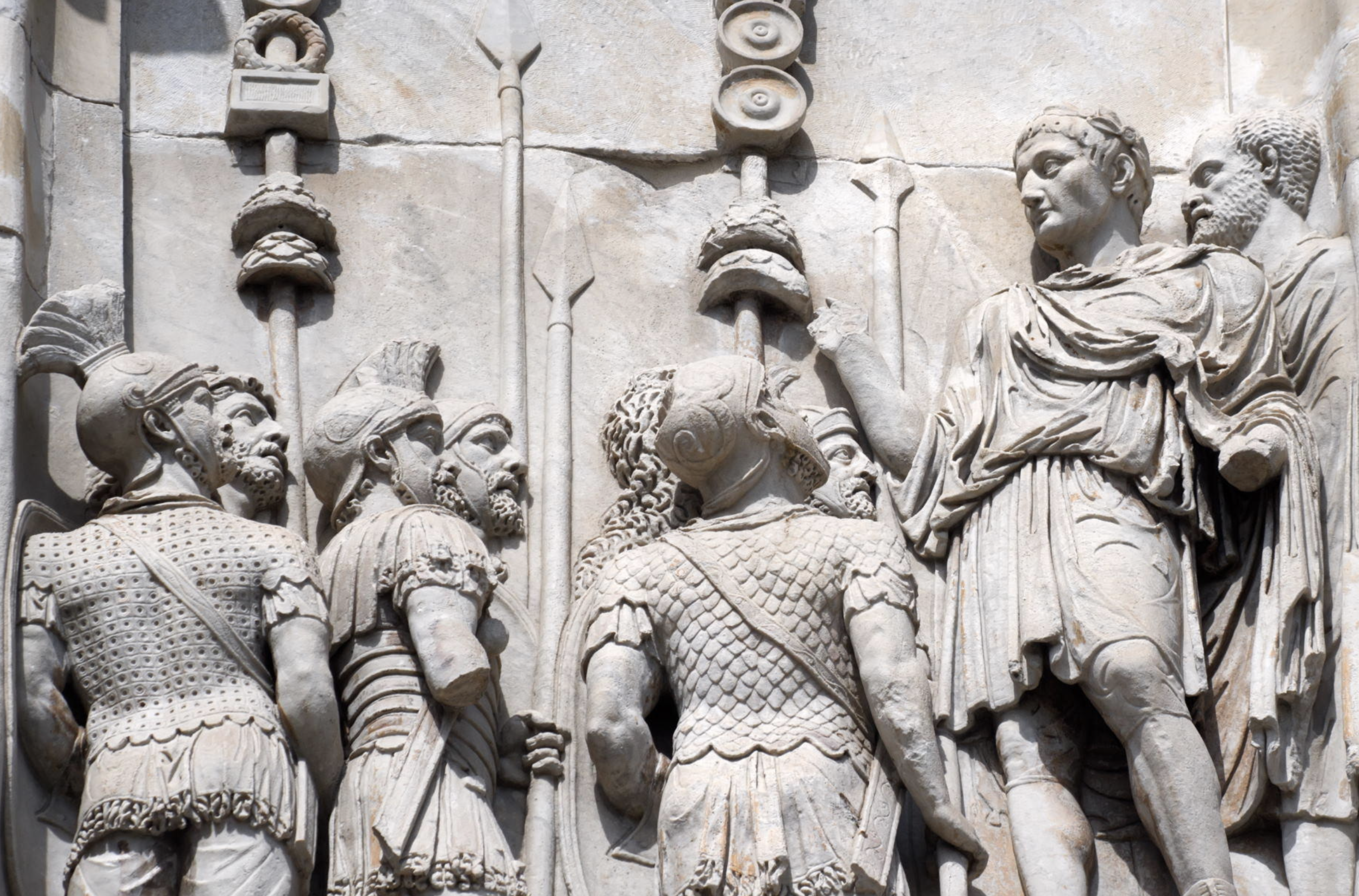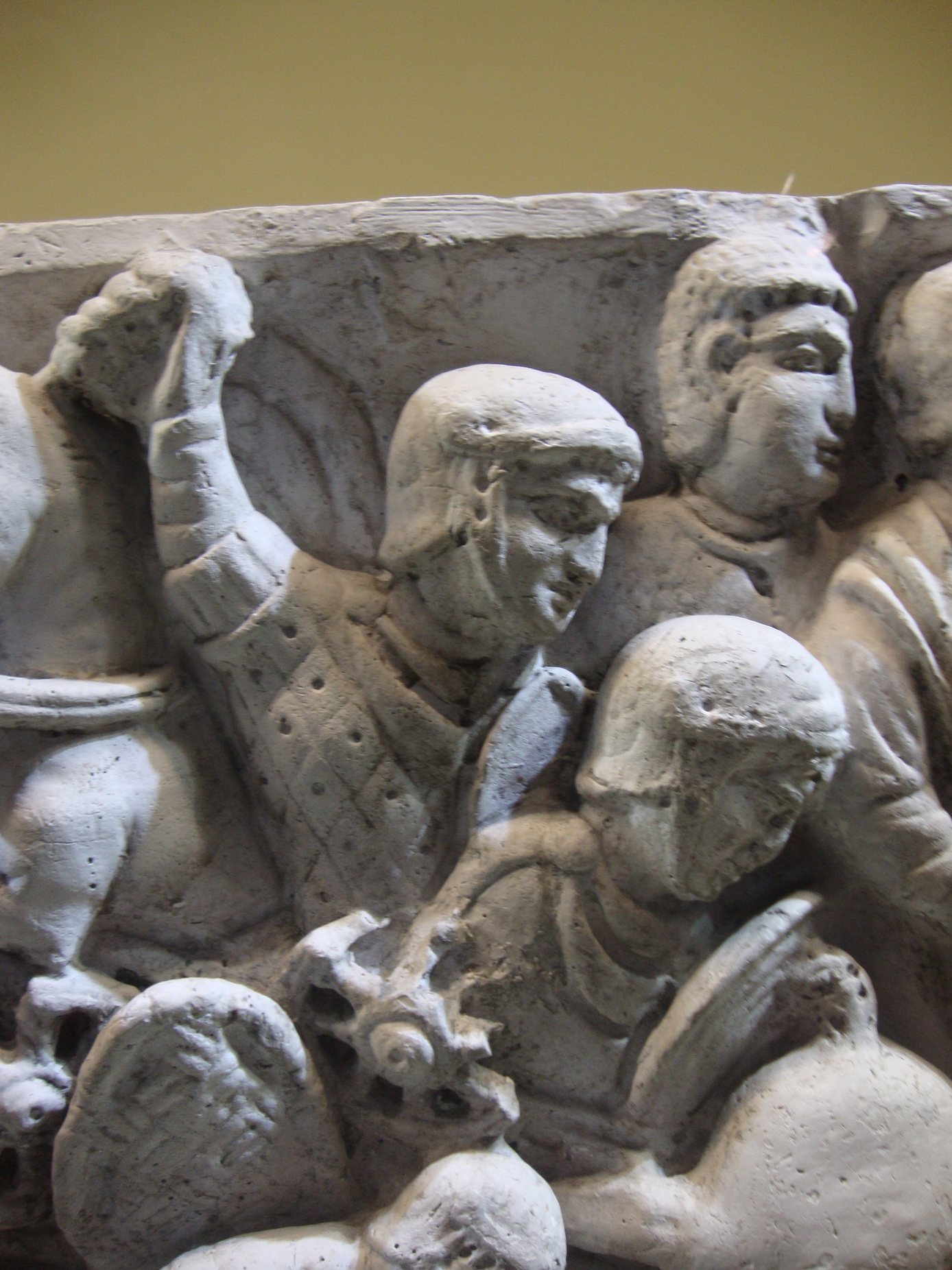A Roman Armor that has been Missed? Did Roman Soldiers Wear Quilted Armor?
Roman armies were well equipped, probably from the time of the Second Punic War and, certainly, from the period of their professionalization under Gaius Marius (157 – 86 BC) onward. The most common armors over most of Roman history are generally agreed to have been ring-mail (commonly “chainmail” or lorica hamata) and scale armor (lorica squamata). Trajan’s Column has had an immense influence on the general view of Roman armor, and so, because the legionaries are shown there in armor made of overlapping iron straps (called nowadays, lorica seqmentata, though the true Latin name is unknown), this armor is often shown in popular art and films. It was used, probably from the time of Augustus until the late second century, and possibly later, though it never displaced ring or scale armor, both of which supplanted it.
All of these are metal armors, and metal armors are expensive: iron was costly to refine in the ancient world and, once produced, it had to be forged and formed into the components needed for armors: rings, scales, straps, hinges and so on. Consider, for example, a mail shirt such as might have been worn by a Roman soldier: depending upon the size of the rings, it would have been made up of as many as 12,000 of them and possibily more. Roman mail was made of two sorts of rings: those punched from a sheet of iron, and those made from drawn wire that were interlaced with the punched rings and then closed and riveted to prevent opening. The rows alternated, punched and riveted, so such a shirt would require that 6,000 rings be formed, punched to receive rivets, and then be riveted closed. Undoubtedly hand tools such as swages were used to form the rings and do this work as quickly as possible. Although this is a guess, it seems unlikely that a ring made of drawn wire could be cut, formed, closed and riveted, even with such tools, in less than about minute. So, about 6,000 minutes for a mail shirt, or roughly 100 hours of labor.
It’s certainly possible, that this is an overestimation, but it’s difficult to see how it could be far off. Let’s agree, for the sake of argument, that skilled armorers could produce such a shirt in only 80 hours. This seems a reasonable hedge against overestimation. The next question is how many such shirts would a legion require? The general agreement is that a legion in the Early Empire was made up of about 4800 men. If all were equipped with mail shirts, 384,000 man-hours would seem to have been required (9,600 modern work weeks) to furnish mail shirts for each legion. In the Early Empire there were about 27 legions and an equal (or somewhat greater) number of auxiliary soldiers. Can the reader see a problem?
Not all legionaries and auxiliaries wore ring-mail. But even those that wore scale-armor or strap armor were equipped very expensively, even if, for example, a scale armor shirt took half or quarter as much time to produce (this is a guess). It seems evident that it would have been extremely costly to equip an army in which even half or a third of the soldiers wore ring-mail.
A ring-mail shirt might well have remained in use for a hundred years, but the problem of equipping newly-raised legions still remains. When, for example, Pompey raised three legions of his own during the civil wars of the Republic, where did the armor come from? Were the legions unarmored for months while the equipment was made?
All of this is not to say that metallic armor was not common, but it does cause me to ask whether the Romans used non-metallic armor, armor made from leather or fabric, in the latter case likely quilted. I think the logistical problems, chiefly cost and speed of construction of metallic armor for an army as large as that of Rome, suggest that this must have been the case, but apart from that, there is some sculptural evidence that strongly suggests this: the figure of soldier on the Arch of Constantine, and another on the side of a sarcophagus. They are reproduced on the right.
The scene from the Arch of Constantine shows that Emperor addressing troops. The sculpture was probably found originally on an arch of Marcus Aurelius and was reused on this arch and thus likely dates from the late second century. Three soldiers are prominently displayed, each in a different sort of armor. The right and middle soldiers wear scale and strap-armor, but the man on the left wears something quite different. The armor fits the torso so it cannot be rigid, but what is it? A close look shows that it is divided into small squares, each with an indentation in its center. It seems unlikely that this mean to represent ring-armor, which it doesn’t resemble.
A clue to this armor is likely found in a second example, taken from a Roman sarcophagus in the Archaeological Museum of Split. It dates from the late fourth century AD and depicts the Old Testament account of the Hebrews crossing of the Red Sea. The Egyptian soldiers are shown as though they were Romans, and the soldier at the head of the army wears armor similar to that shown on the soldier from the Arch of Constantine. Once again we see an armor that is flexible and divided into sections, this time lozenges rather than squares, and each, again, with an indentation in its center.
The most likely explanation, it seems to me, is that a quilted fabric or leather armor is shown, the stitching of the quilting indicated by the lines. The indentations in the centers of the quilting probably indicate a stitch in the center of each division, either to keep the stuffing or layers in place, or, perhaps, as decoration.
Quilted armor was common, of course, in the middle ages and went by various names such as aketon, gambeson or jack. It seems likely that such armor was used in antiquity too, particularly in view of the necessarily high cost of metallic armor. So, why don’t we see more evidence of it? I suggest that it is not well represented in art because it was probably not regarded as of particularly high status, and it would be unlikely to survive in the archaeological record because it was made of perishable materials.
Modern tests have shown quilted armor to be quite protective. Furthermore, some sort of garment, likely often quilted, was probably worn under ring-armor in antiquity, as was done in the middle ages, to protect the wearer against the shock of blows and injury from having the rings driven against the body. Why wouldn’t such a garment, perhaps made a bit thicker and thus more protective, have been used by itself in antiquity as a cheap, quickly-made, light and protective alternative to metal armor?

